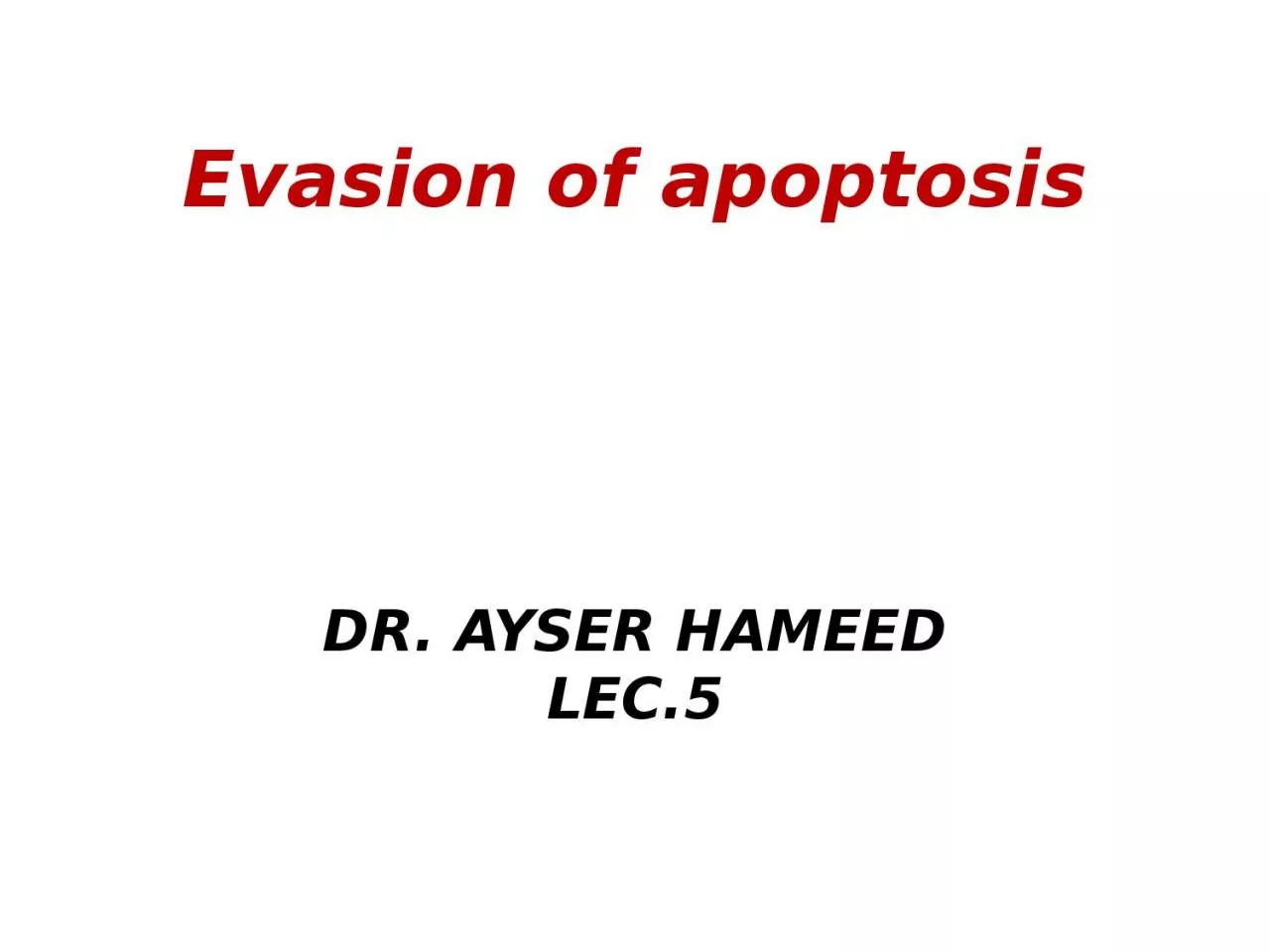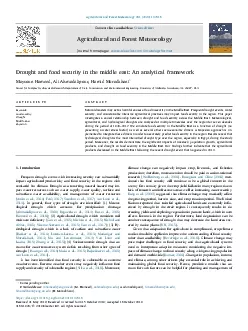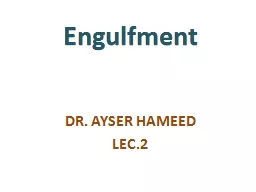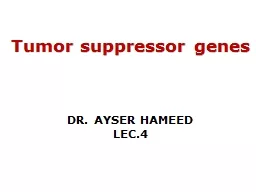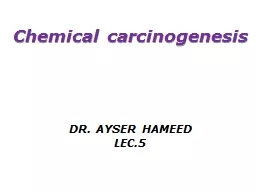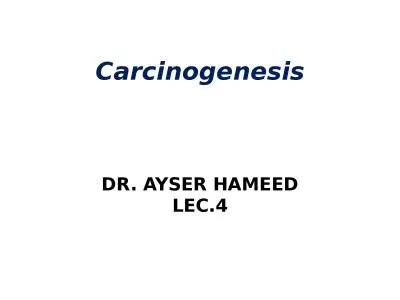PPT-Evasion of apoptosis DR. AYSER HAMEED
Author : jacey | Published Date : 2024-03-13
LEC5 3 Evasion of apoptosis Normally the mechanism of apoptosis is mediated by many genes amp achieve by two phases Initiation phase which is mediated by TNF
Presentation Embed Code
Download Presentation
Download Presentation The PPT/PDF document "Evasion of apoptosis DR. AYSER HAMEED" is the property of its rightful owner. Permission is granted to download and print the materials on this website for personal, non-commercial use only, and to display it on your personal computer provided you do not modify the materials and that you retain all copyright notices contained in the materials. By downloading content from our website, you accept the terms of this agreement.
Evasion of apoptosis DR. AYSER HAMEED: Transcript
Download Rules Of Document
"Evasion of apoptosis DR. AYSER HAMEED"The content belongs to its owner. You may download and print it for personal use, without modification, and keep all copyright notices. By downloading, you agree to these terms.
Related Documents

